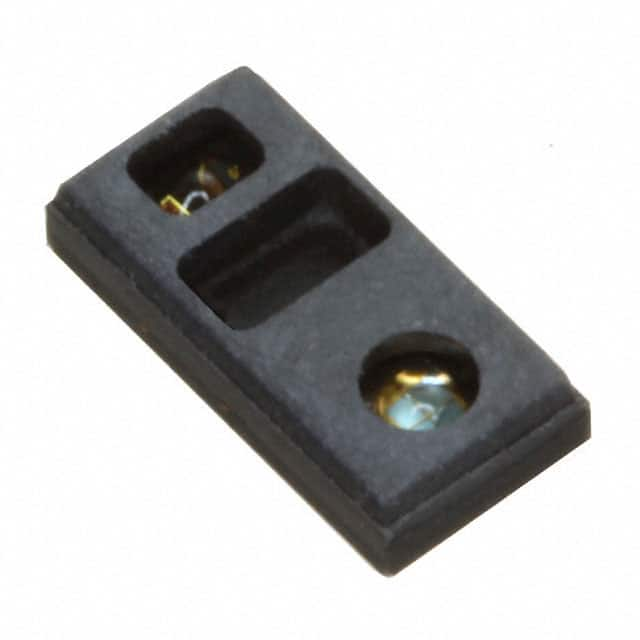Lihat spesifikasi untuk detail produk.

MAX30100EFD+T
Introduction
The MAX30100EFD+T is a vital sign monitoring sensor belonging to the category of integrated optical sensors. This sensor is widely used for non-invasive measurement of physiological parameters such as heart rate and blood oxygen saturation levels. It is characterized by its small package size, low power consumption, and high accuracy, making it suitable for various wearable and medical device applications.
Basic Information Overview
- Category: Integrated Optical Sensor
- Use: Non-invasive measurement of physiological parameters
- Characteristics: Small package size, low power consumption, high accuracy
- Package: 14-pin TDFN (3mm x 4mm)
- Essence: Vital sign monitoring
- Packaging/Quantity: Available in tape and reel packaging with a quantity of 2500 units per reel
Specifications
The MAX30100EFD+T sensor has the following specifications: - Operating Voltage: 1.8V to 2.0V - Operating Temperature Range: -40°C to +85°C - LED Current: 0.2mA to 50mA - Sample Rate: 50Hz to 3200Hz - ADC Resolution: 16 bits
Detailed Pin Configuration
The detailed pin configuration of the MAX30100EFD+T sensor is as follows:
| Pin Number | Pin Name | Description | |------------|----------|-------------| | 1 | SCL | I2C Serial Clock Input | | 2 | SDA | I2C Serial Data Input/Output | | 3 | INT | Interrupt Output | | 4 | RD | LED Pulse Width Control | | 5 | GND | Ground | | 6 | VDD | Power Supply (1.8V to 2.0V) | | 7 | RST | Reset Input | | 8 | NC | No Connection | | 9 | NC | No Connection | | 10 | NC | No Connection | | 11 | NC | No Connection | | 12 | NC | No Connection | | 13 | NC | No Connection | | 14 | NC | No Connection |
Functional Features
The MAX30100EFD+T sensor offers the following functional features: - Integrated red and IR LEDs for optical signal transmission - Photodetectors for signal reception - Low power consumption for battery-operated devices - I2C interface for communication with microcontrollers - Interrupt output for event-driven processing
Advantages and Disadvantages
Advantages
- Small package size enables compact device designs
- High accuracy for reliable physiological parameter measurements
- Low power consumption prolongs battery life in portable devices
- I2C interface allows for easy integration with microcontroller-based systems
Disadvantages
- Limited to non-invasive measurement applications
- Sensitivity to ambient light may require additional signal processing
Working Principles
The MAX30100EFD+T sensor operates based on the principle of photoplethysmography (PPG), where the absorption of light by blood vessels is used to measure heart rate and blood oxygen saturation. The integrated red and IR LEDs emit light into the skin, and the photodetectors capture the reflected or transmitted light, which is then processed to extract physiological parameters.
Detailed Application Field Plans
The MAX30100EFD+T sensor finds extensive application in the following fields: - Wearable fitness and activity trackers - Smartwatches and sports monitoring devices - Medical devices for continuous patient monitoring - Health and wellness applications for home use
Detailed and Complete Alternative Models
Some alternative models to the MAX30100EFD+T sensor include: - MAX30101: Offers enhanced ambient light rejection - MAX30102: Provides additional pulse oximetry and heart-rate detection features - MAXM86161: Integrates PPG and ECG functionalities for advanced health monitoring
In conclusion, the MAX30100EFD+T sensor is a versatile and reliable solution for non-invasive vital sign monitoring, catering to a wide range of applications in the healthcare and consumer electronics industries.
Word Count: 560
Sebutkan 10 pertanyaan dan jawaban umum terkait penerapan MAX30100EFD+T dalam solusi teknis
Sure, here are 10 common questions and answers related to the application of MAX30100EFD+T in technical solutions:
What is the MAX30100EFD+T?
- The MAX30100EFD+T is a highly integrated pulse oximeter and heart-rate sensor module.
How does the MAX30100EFD+T work?
- It uses red and infrared LEDs to measure the absorption of light by the blood, allowing it to calculate heart rate and oxygen saturation.
What are the typical applications of the MAX30100EFD+T?
- It is commonly used in wearable fitness and health monitoring devices, as well as medical equipment for patient monitoring.
What is the operating voltage range of the MAX30100EFD+T?
- The operating voltage range is typically 1.8V to 3.3V.
Can the MAX30100EFD+T be used for continuous monitoring?
- Yes, it is designed for continuous monitoring of heart rate and oxygen saturation.
What is the output interface of the MAX30100EFD+T?
- It typically provides digital output through I2C communication.
Is the MAX30100EFD+T suitable for low-power applications?
- Yes, it is designed for low-power operation, making it suitable for battery-powered devices.
What is the typical measurement accuracy of the MAX30100EFD+T?
- It can achieve high accuracy in measuring heart rate and oxygen saturation levels.
Does the MAX30100EFD+T have built-in motion artifact compensation?
- Yes, it includes built-in motion artifact compensation to improve accuracy during movement.
Are there any specific design considerations when integrating the MAX30100EFD+T into a product?
- Designers should consider factors such as ambient light interference, sensor placement, and power management to optimize performance.
I hope these questions and answers are helpful for your technical solutions involving the MAX30100EFD+T! Let me know if you need further assistance.

